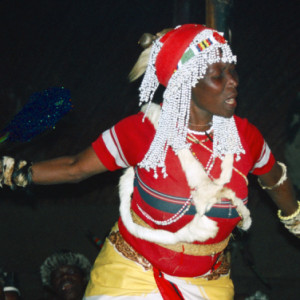Alas poor Lazarus
After bursting into floral life Lazarus, our Hippeastrum is distinctly past its best.
Today's extra takes me back to Zululand in the early 1990s. When I was young lad I much enjoyed Sir H. Rider Haggard's 1885 novel King Solomon's Mines. It tells of a search of an unexplored region of Africa by a group of adventurers led by Allan Quatermain for the missing brother of one of the party. I was quite terrified by the account of King Twala's witch smeller, an evil impossibly ancient hag named Gagool. She roots out any potential opposition by ordering regular witch hunts in which all those identified as witches are slaughtered.
Little did I imagine that half a century later I would see a re-enactment of a witch-smelling ceremony.
Witch smellers, almost always women, were important and powerful people amongst the Zulu and other Bantu-speaking peoples of Southern Africa, responsible for rooting out evil witches in the area, and sometimes responsible for causing considerable bloodshed.
If it was determined that some misfortune which had befallen the area had been caused by a witch, the chief summoned his people to a great meeting, in which they all sat in a circle, sometimes for four or five days. The witch smellers then took their places in the centre, in extravagant costumes and carrying a quagga-tail switch, the symbol of their profession. The witch smellers proceeded to work themselves up into a frenzy. In this state, they spun, stalked and leapt, eventually touching one or more of the people with their quagga-tail switches, upon which the person was immediately dragged away and killed. All the living things in the accused witch's hut, human and animal, were also killed. Sometimes an entire kraal was exterminated in this way.


Comments
Sign in or get an account to comment.


